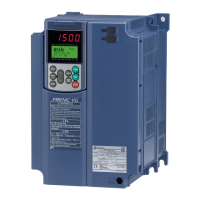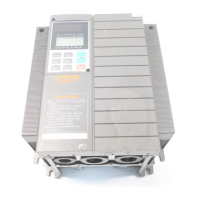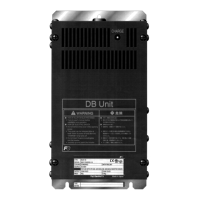Item Explanation Remarks
Control
Frequency setting
Auxiliary frequency setting:
Inputs at terminal [12], [C1] (C1 function) or [C1] (V2 function) can be added to the
main setting as auxiliary frequency settings.
Operation at a specified ratio:
The ratio can be set by analog input signal.
0 to 10 VDC/0 (4) to 20 mA/0 to 200% (variable)
Inverse operation: Switchable from “0 to +10 VDC/0 to 100%” to “+10 to 0 VDC/0 to
100%” for the external command (terminals [12] and [C1] (V2
function)
Switchable from “0 to -10 VDC/0 to -100%” to “-10 to 0 VDC/0 to
-100%” for the external command (terminal [12])
Switchable from “4 to +20 mA DC/0 to 100%” to “20 to 4 mA DC/0
to 100%” for the external command (terminal [C1] (C1 function))
Switchable from “0 to +20 mA DC/0 to 100%” to “20 to 0 mA DC/0
to 100%” for the external command (terminal [C1] (C1 function))
Pulse train input (standard):
Pulse input = Terminal [X5], Rotational direction = general terminal
Complementary output: Max. 100 kHz, Open collector output: Max. 30 kHz
Pulse train input (option): A PG option card is required.
CW/CCW pulse, pulse + rotational direction
Complementary output: Max. 100 kHz, Open collector output: Max. 30 kHz
Acceleration/
deceleration time
Setting range: Between 0.00 and 6000 s
Switching: The four types of acceleration/deceleration time can be set or selected
individually (switchable during operation).
Acceleration/deceleration pattern:
Linear acceleration/deceleration, S-curve acceleration/deceleration (weak,
arbitrary (with function code)), curvilinear acceleration/deceleration
Deceleration mode (coast-to-stop):
Shutoff of the run command lets the motor coast to a stop.
Acceleration/deceleration time exclusive to jogging (0.00 to 6000 s)
Forcible stop deceleration time:
Deceleration stop by the forcible stop STOP.
During forced stop operation, S-curve acceleration/deceleration is disabled.
Frequency limiter
(Upper limit and lower
limit frequencies)
• Specifies the upper and lower limits in Hz.
• “Continue to run” or “Decelerate to a stop” selectable when the reference
frequency drops below the lower limit.
Frequency/PID
command bias
• Bias of reference frequency and PID command can be independently set
(setting range: 0 to ±100%).
Analog input
• Gain: Setting range from 0 to 200%
• Offset: Setting range from -5.0 to +5.0%
• Filter: Setting range from 0.00 s to 5.00 s
• Polarity selection (±/+)
Jump frequency • Three operation points and their common jump width (0 to 30.0 Hz) can be set.
Timed operation
The inverter drives the motor for the run time specified from the keypad and stops its
output. (Single-cycle operation)
Jogging operation
• Operation with key (standard keypad), or key (multi-function keypad),
or digital input signal FWD or REV
(Exclusive acceleration/deceleration time setting, exclusive frequency setting)
Auto-restart after
momentary power
failure
• Trip immediately: Trip immediately at the time of power failure.
• Trip after a recovery from power failure:
Coast to a stop at the time of power failure and trip when the power is recovered.
• Trip after decelerate-to-stop:
Deceleration stop at power failure, and trip after stoppage
• Continue to run: Operation is continued using the load inertia energy.
• Start at the frequency selected before momentary power failure:
Coast-to-stop at power failure and start after power recovery at the frequency selected
before momentary stop.
• Start at starting frequency: Coast-to-stop at power failure and start at the starting
frequency after power recovery.
• Start at the frequency searched at the time of power recovery:
Coast-to-stop at power failure, search for the idling motor speed, and restart the motor.

